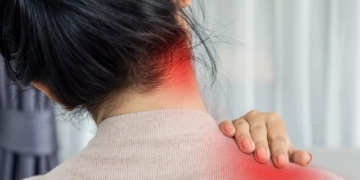Hair loss is a challenging condition to treat, with often low treatment efficacy. However, a new method may improve this: Mesotherapy – injecting medication into the scalp. The medication enhances local blood circulation and nourishes the hair follicles.
There are several types of hair loss:
Temporary hair loss: Hair loss often occurs in abundance during spring and autumn. After puberty and around the age of 40, there is also a phenomenon of hair loss due to hormonal changes that reduce physiological hair growth.
Non-inflammatory diffuse hair loss: Acute hair loss can occur due to psychological stress from childbirth, miscarriage, severe fever, surgery, or intense emotions. Chronic hair loss may be due to a deficiency of biotin, iron, and zinc; or from the use of certain medications (such as chemotherapy drugs, anticoagulants, or anticonvulsants). This type of hair loss can also be hormonal, caused by increased or decreased thyroid function, parathyroid disease, diabetes, lupus erythematosus, calcium deficiency in the blood, or anemia.
Hair loss due to excess male hormones or oily skin: This is the most common cause. Hair follicles are affected by genetic factors and sensitivity to changes in male hormones, shortening the hair growth cycle. This condition typically occurs during puberty in males and around 30 years of age in females.
In males, hair loss occurs in cycles of about 3 to 4 months and is replaced by fine, hair-like strands. Initially, hair loss appears as small depressions at the center of the forehead and temples; then it spreads in a spiral pattern to the crown of the head. Eventually, hair is only left on the temples and the back of the head. In the final stage, very little hair remains, just a narrow, sparse band around the lower back and sides of the head.
In females, hair loss occurs in cycles, approximately two times a year, often seasonally, and may be influenced by genetics. In the early stages, hair loss is concentrated at the crown, appearing as widening parts. It then spreads forward, reaching about 1 cm from the hairline at the forehead, and ultimately results in complete hair loss at the crown. Symptoms may accompany increased male hormone levels, such as acne, excessive hair growth, menstrual irregularities, and masculinization…
Localized non-scarring hair loss:
Alopecia areata: Characterized by one or more completely bald patches, while the surrounding areas remain normal. This form can expand from a few spots to complete baldness, and the progression is unpredictable. Possible causes include autonomic nervous system disorders, hormonal imbalances (abnormal thyroid function), emotional trauma, and autoimmune conditions (most likely, though not currently proven).
Traction alopecia: Hair loss occurs in patches with unclear boundaries, with hair lengths varying. Commonly seen following trauma that causes scalp hematomas or after surgery. Infections from bacteria or fungi are characterized by point loss of hair with broken, short strands.
Scarring alopecia: Significant scarring destroys hair follicles, preventing recovery.
If hair loss is due to infections or fungal infections, specific treatment with appropriate antibiotics and antifungal medications is necessary. Medications to reduce hair loss include vitamins B5, B6, and amino acids such as cystine, cysteine, and methionine. Additionally, doctors may prescribe topical cortisone, allergy treatments for the scalp (to reduce hair loss due to autoimmune conditions), and scalp stimulation with cold temperatures.
One relatively effective hair loss treatment is Minoxidil, applied topically, which can increase hair quantity by approximately 30%. However, it also has side effects, such as affecting blood pressure, causing rapid heartbeat, and fluid retention. Results may take 4 to 6 months to appear. There are also anti-androgen medications (only for women) and topical immunotherapy (isoprinosine) for cases of significant hair loss.
A new method has emerged, which is injecting therapeutic medications into the scalp (Mesotherapy). This method has shown high efficacy in treating hair loss, improving local blood circulation and nourishing the hair follicles. The treatment principle is to restore microcirculation and local nourishment with essential vitamins, slowing the degeneration of hair follicles.
The treatment process involves injecting the affected scalp area once a week for 4 consecutive weeks; then every two weeks for 4 sessions. After that, treatments can be done once a month or every two months. It is advised to avoid washing or dyeing hair for 24 hours post-treatment.
Statistical results show that after 4 treatment sessions, hair loss stops in about 90%; scalp moisture levels decrease after 3 weeks. Hair begins to regrow after 3 months; younger patients tend to experience faster hair regrowth.


















































